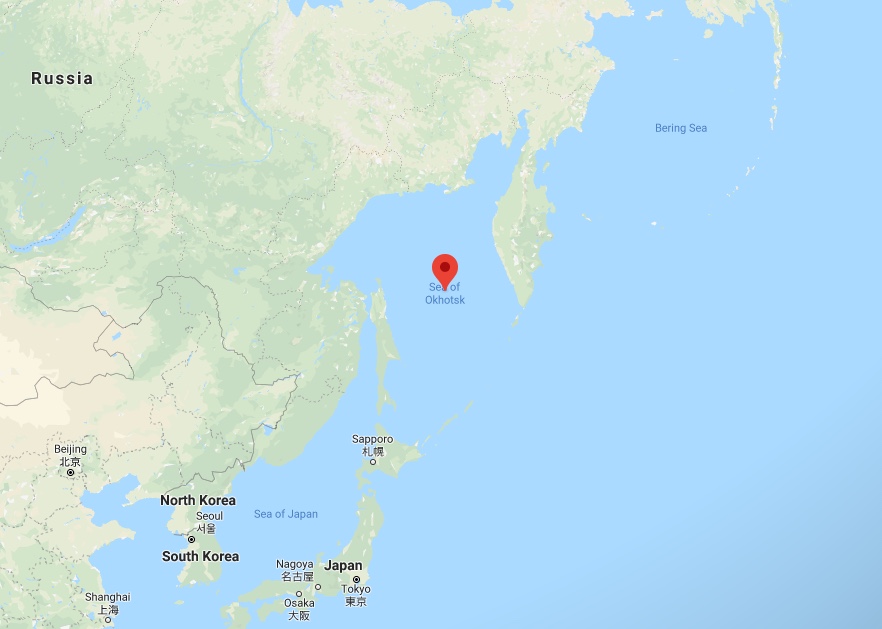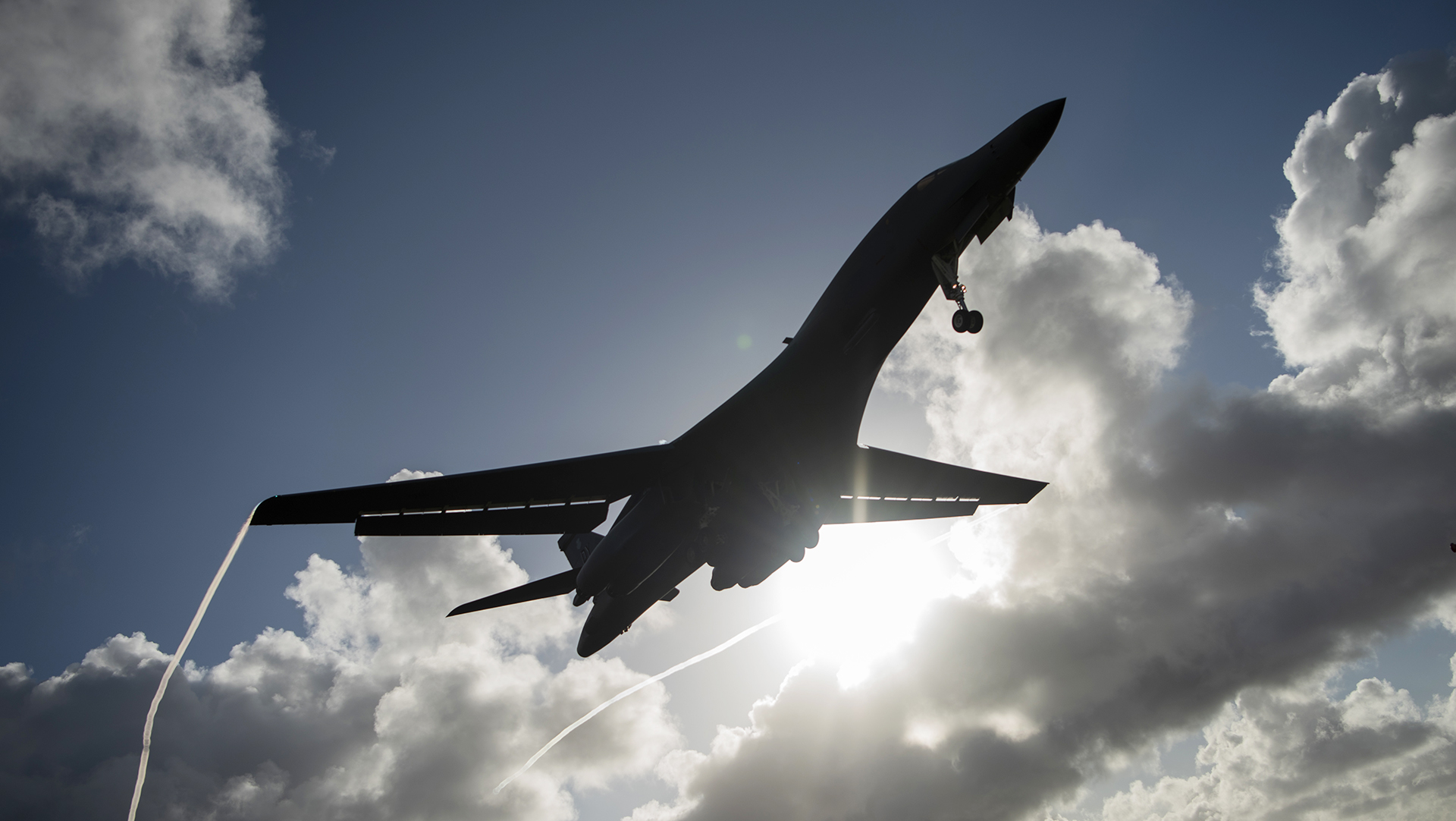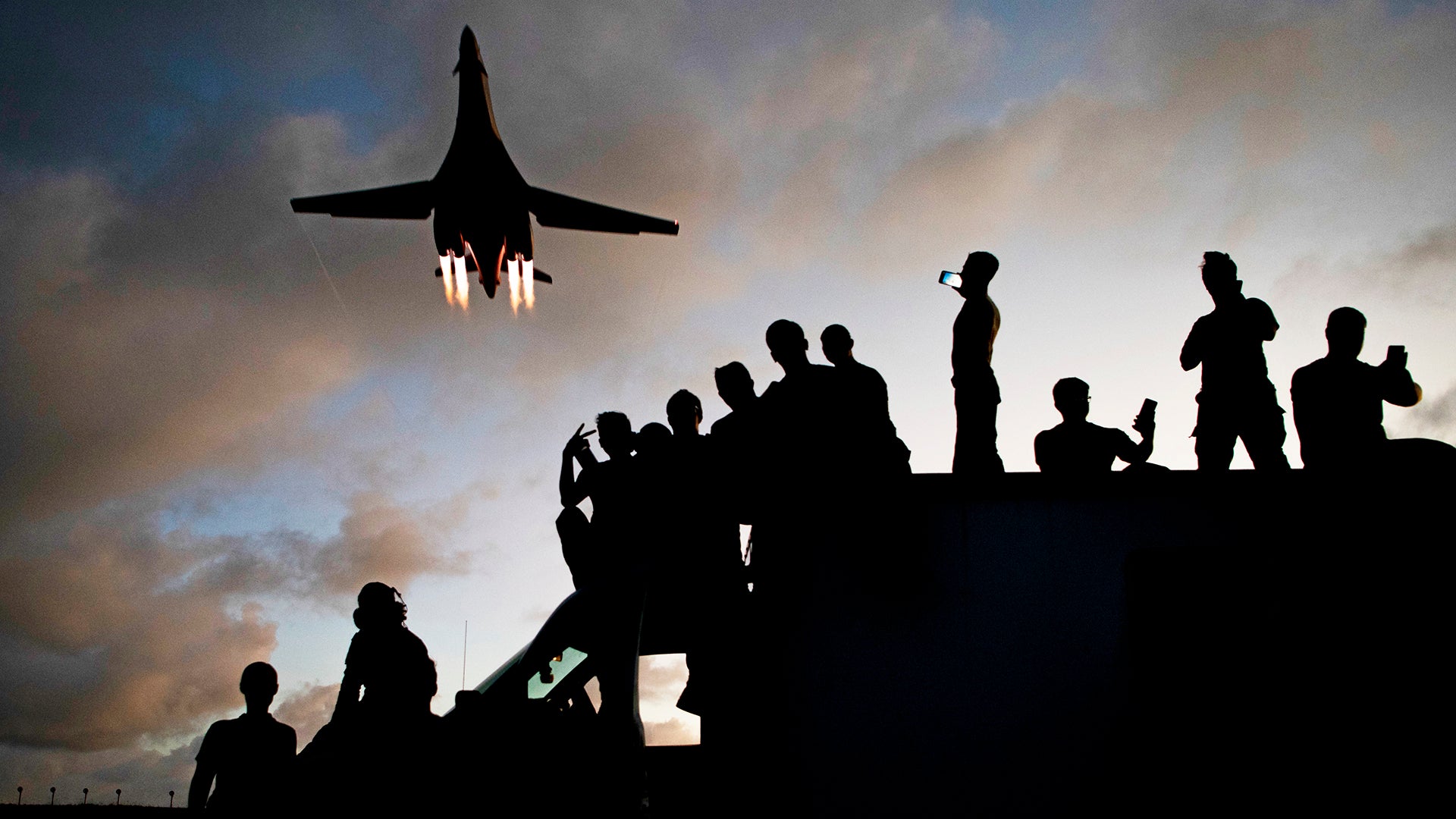In something of an unprecedented move, according to aircraft trackers, a B-1B bomber on a global airpower mission flew into the Sea of Okhotsk on Thursday, a large bay-like body of water that is surrounded on three sides by Russian territory. The flight was the most provocative, so far, of a series of very long-range missions that the B-1B fleet has headed up after the Continuous Bomber Presence on the Pacific island of Guam was shuttered after 15 years. In its place is a new strategy for heavy bomber power projection to the Pacific Theater, dubbed Dynamic Force Employment, which is far less predictable than what came before and seemingly more aggressive in nature.
A press release about this latest sortie doesn’t detail the one bomber’s detour into Russia’s backyard, but it does talk about how varied and long these missions are becoming, as well as the strategy behind them:
In continued demonstration of the U.S. Air Force’s dynamic force employment model, two U.S. Air Force B-1B Lancers flew from Andersen Air Force Base, Guam, and conducted training in Alaska and Japan May 21.
In Alaska, the B-1s were joined by F-22s and F-16s out of the 3rd Wing at Joint Base Elmendorf-Richardson, to conduct a large force employment exercise in the Joint Pacific Alaska Range Complex. The crews then flew southwest to Japan where they completed familiarization training in support of U.S. European Command objectives. The bombers then continued south in the vicinity of Misawa, Japan integrating with the USS Ronald Reagan and a P-8 Poseidon to conduct Long Range Anti-Ship Missile training before returning to Guam.
The B-1s and Airmen are currently deployed to Andersen AFB from 9th Expeditionary Bomb Squadron, 7th Bomb Wing, Dyess Air Force Base, Texas, as part of a joint U.S. Indo-Pacific Command (INDOPACOM) and U.S. Strategic Command Bomber Task Force (BTF).
“These missions demonstrate our ability to hold any target at risk, anytime, and anywhere,” said Lt. Col. Ryan Stallsworth, 9th EBS commander. “The training value of these sorties is irreplaceable…our team conducted large force exercise training around Alaska with U.S. Air Force fighters, we conducted multiple standoff weapons training events, as well as integrated with U.S. naval assets along the way. From a readiness perspective, it is hard to think of a more valuable training sortie.”
…
“These missions make the DoD more ready, more lethal, and flat out stronger,” Stallsworth continued. “Our aviators are getting the chance to coordinate and practice time-sensitive target drills in the Pacific.”
…
“These types of sorties, with multiple training events, are not planned in a vacuum or stove-piped,” Stallsworth said. “These sorties effectively exercise our Department of Defense integration muscles [and] require multiple Combatant Commands to effectively plan and communicate, in order to synchronize effects in multiple domains.”
The War Zone was the first to report on the ending of the Continuous Bomber Presence mission on Guam and the initial long-range flight that would soon become a common activity as the Air Force shuffled its strategic posture in the region. Since then, bombers have circumnavigated Japan, flown deep into the South China Sea, and have also made shorter duration deployments to Guam. This is in addition to missions to Europe. In recent memory, the closest they came to Russia’s domain in the Pacific was a trip across the Bering Strait and down along the Kamchatka Peninsula, that was until Thursday’s flight into the Sea of Okhotsk.

Although the B-1B’s close air support mission has made all the headlines over nearly two decades of the Global War On Terror, the aircraft’s ability to carry large amounts of standoff munitions, namely stealthy AGM-158 Joint Air-to-Surface Standoff Missiles (JASSM) and their Long-Range Anti-Ship Missile (LRASM) cousins, are a larger focus of these missions today. Laying sea mines is another key capability that is coming back to the forefront of the bomber mission. So, whether it’s attacking highly defended surface or ground targets over long distances or denying enemy fleets access to key waterways, the B-1Bs pose a major threat to America’s adversaries in the region. In the future, hypersonic weapons will likely be added to the B-1B’s arsenal, as well. As such, flying into the mouth of the Sea of Okhotsk is an ominous reminder of these capabilities and that real-world training is being executed to prepare crews to implement them during a peer state conflict.

It isn’t clear what Russia’s response was to this mission or if the B-1B was intercepted and escorted during its time in the area, but less than a day after that mission took place, the Russians have launched their own long-range patrol near Alaska, according to our plane tracker friends. That event is ongoing, but ones like it are hardly rare these days.
Oriana Pawlyk of Military.com recently talked to an official from Global Strike Command about this overall shift in bomber deployments. They mentioned that they are gathering data on the new strategy and that the Continuous Bomber Presence mission could be revived in the future. For now it’s all about the less predictable Dynamic Force Employment concept that we have discussed in depth in the past. Be sure to check out Oriana’s full article here.
After years of supporting operations in the Middle East and beyond, the B-1B fleet became notoriously run-down, but after some time spent giving it much needed TLC, it is beginning to be able to surge again. The fleet overall is set to be cut substantially in the coming years as part of a plan to consolidate the beleaguered force. It will be interesting to see if the force can continue to bear the brunt of the long-range Dynamic Force Employment strategy going forward.
Regardless, the Air Force is projecting power throughout the Pacific Theater and beyond like never before. We will just have to wait and see where they turn up next.
Author’s note: A special thanks to Golf9 (@KimagureGolf9) for the great tracking work yesterday on this flight.

Contact the author: Tyler@thedrive.com
